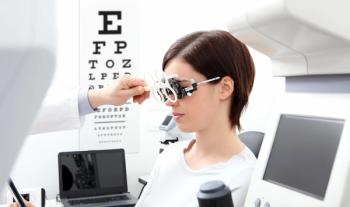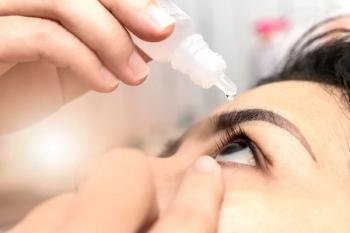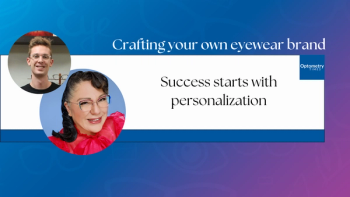
AOA 2023: How to integrate vision rehabilitation after stroke into your business model
Maria Richman, OD, FAAO, and Harvey Richman, OD, FAAO, FCOVD, met with Optometry Times to discuss their presentations on rehabilitation of a patient who suffered from issues of vertical vision after a stroke, as well as integrating patient care with the business model.
Maria Richman, OD, FAAO, and Harvey Richamn, OD, FAAO, FCOVD, caught up with Optometry Times at AOA in Washington, DC, to discuss their presentations.
Video Transcript
Editor's note: The transcript has been lightly edited for clarity.
Maria Richman, OD, FAAO:
Hello, I'm Dr. Maria Richman. I'm from Manasquan, New Jersey, and I'm one of the presenters at the Vision Rehab Forum.
Harvey Richman, OD, FAAO, FCOVD:
I'm Dr. Harvey Richman. I'm also another one of the presenters and I happen to practice with Dr. Maria Richman in Manasquan, New Jersey.
M. Richman:
Great. I'm on the committee as well at AOA for the Vision Rehab Committee. I was honored to be a part of the forum and asked to be one of the presenters. Now my case that I spoke about was interesting because my patient was an optometrist. He had suffered a stroke in the pons-midbrain area by the thalamus, too, so pons and thalamus stroke. He had problems with vertical gaze, so he could look straight ahead but he couldn't look down as he's trying to eat his food or read a paper or so forth. We had to work with some prism, and we had to work with some head movements, because he needed to compensate since he couldn't move his eyes down from the palsy. We taught him to move his head down. So lots of little pearls came out of this presentation. Because the stroke was in the midbrain area—in that pons and thalamus area—it affected the third cranial nerve. So he also had one eye that was positioned lower than the other. Because of that, he came in with a patch after he completed his rehab. Our goal was to prescribe him prism so that he could get fusion and not wear the patch. That was one of his goals.
M. Richman:
He's still in therapy with us. But the good thing is that he's already attaining his goals. He's not wearing his patch anymore. He's exercising the eyes more. He's learning how to use head movements, so that if he needs to look down, he's moving his head down since his eyes won't move down. He's bringing things back into his life again that he was missing. He was missing things like reading, socializing, and enjoying TV again. So little by little we're chiseling away and we're giving him a little piece of his life back. Even in complicated cases, just know that vision rehab is a way to help your patients.
H. Richman:
So my area of the presentation was dealing with the billing and coding, the practice management end of the protocol. So I took Dr. [Janis] Winters, Dr. [Carl] Garbus, and Dr. Maria Richman's presentations, reviewed them, and figured out how I would bill them. I discussed situations such as using evaluation and management codes. I updated the attendees on the different variations regarding medical decision making versus time. I actually then went ahead and talked about diagnostic testing, such as visual fields, visual evoked potentials...things that would be important for assessing the vision losses at each of the cases that they presented, too. I went in greater depth into the rehabilitative services, be it the physical medicine codes or the orthoptics codes, that would allow the patients to perform better to have better outcomes. The primary goal of the forum was to integrate the patient care with the business model.
Newsletter
Want more insights like this? Subscribe to Optometry Times and get clinical pearls and practice tips delivered straight to your inbox.
















































.png)


